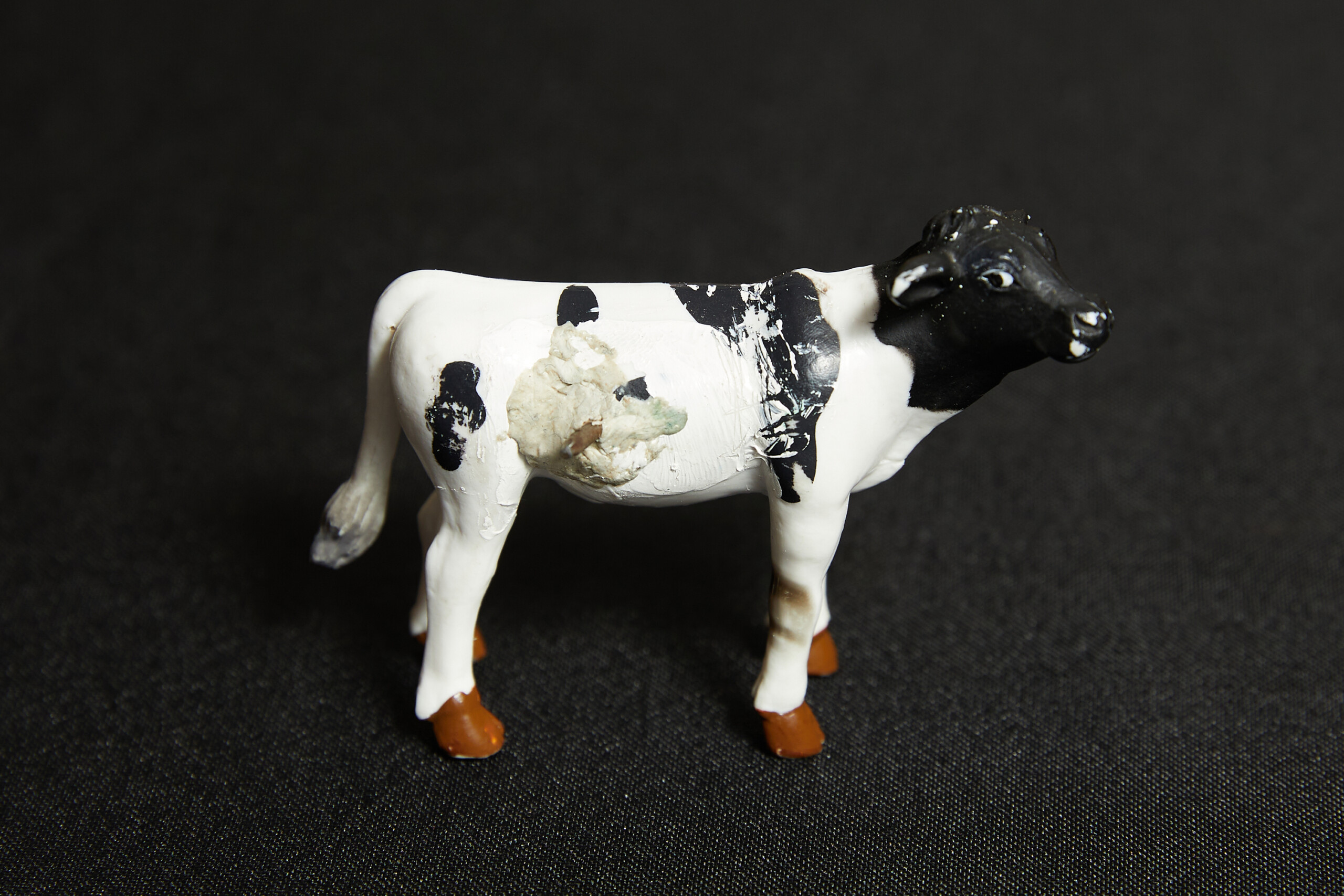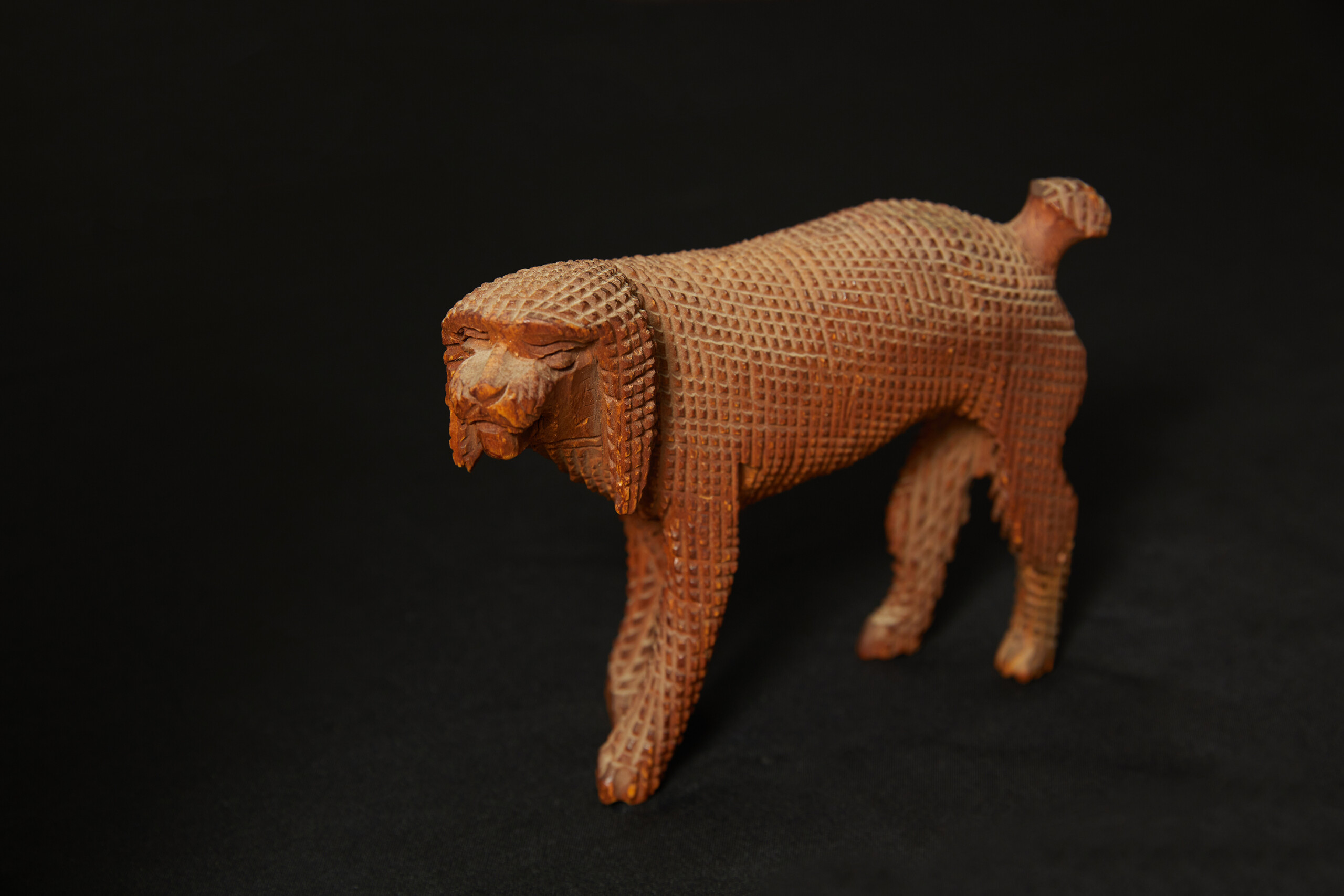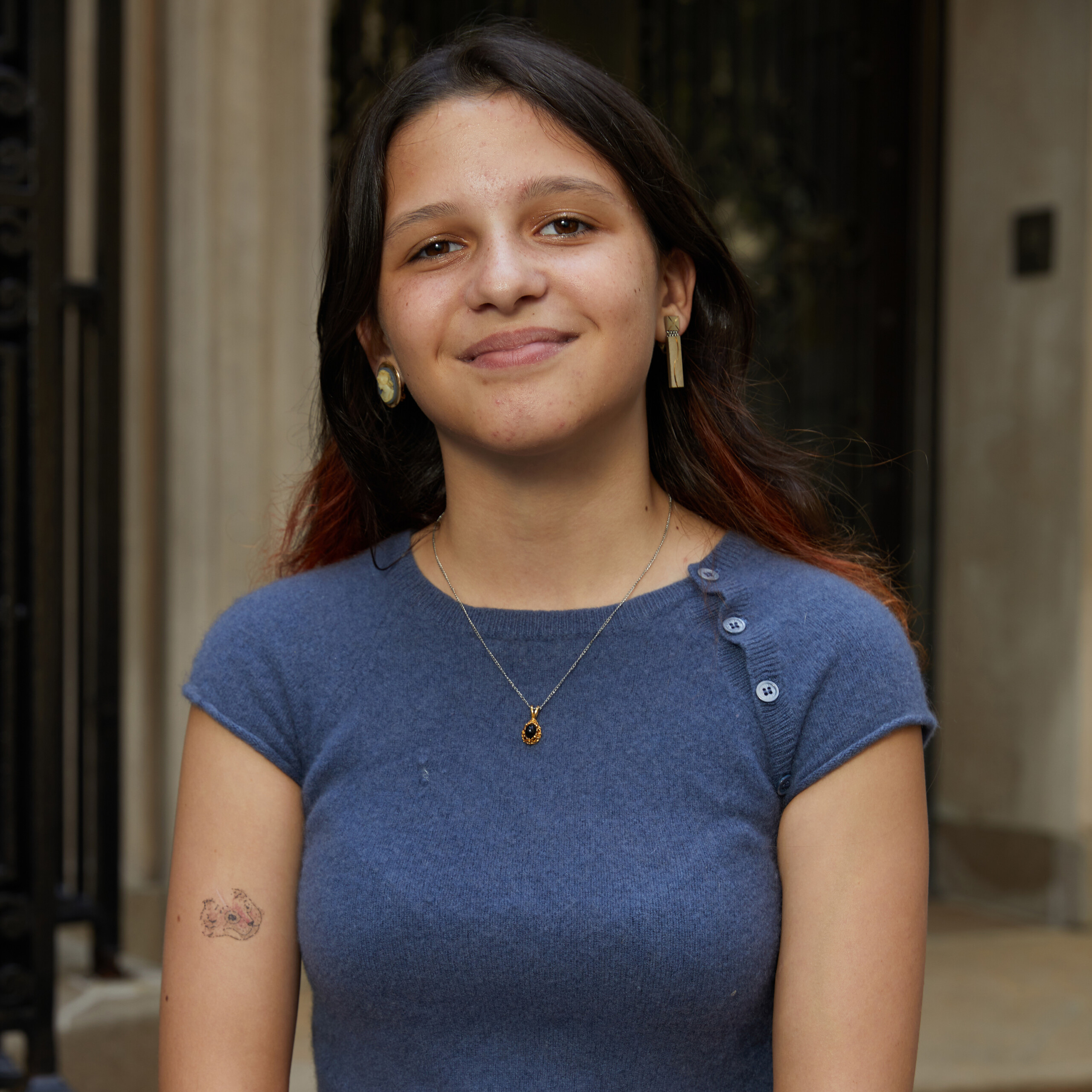PERSONAL OBJECT
BGC STUDY COLLECTION OBJECT

Terra Toys
Cow (with interventions)
Factory location unknown
Plastic, pigment, nail, sticky tack, white paint

Aaron Mountz (1872–1949)
Carved Wooden Dog
Cumberland County, PA
Pine wood
To April –
No, I did not get you.
Had I been mean or rude or annoying?
Carved out –
a game?
To surrender my
self to cycles
Of soft, seeking hands
And violent, probing fingers
But
Thank you for remembering me
And Everything else that isn’t a life for me
You remade my house
Embellished or Un
Finished whole or half
Animal or portrait
Of a naive human
I can not know
To Cow –
Certainly, to live,
I had to.
Sorry thanks
I’m sorry
Thank you
I have made a mess
Carved, hatched –
A primitive embellishment
But
You are me
You are that everything else
You are good
You’re no box
I just hope you’ll remember
A critics eye, more
Careful, more
Precise but
Do they see your carried life
You and I, impersonators
To World –
A dog
Or a sheep, a deer, a cow
A form
A house of bumps and crosses
I give you a portrait of me
Soothing but not smooth
Large but not grand
Whole but
Not in one piece
Lives tallied by houses and hands
Certainly, to live,
You must live with me a long while
Fit narrow fingers
Through
Under
Along
Carved intersections
Wooden ridges and pine canyons
Do you hold me like I am or
Like I only can be
I will not look away
The hands that made me
Unmade
COMPARATIVE ESSAY
Before finishing this essay, I had never seen my personal object and my study collection object next to each other. One is a small plastic cow, no more than two years old, the other a 150 year old wooden dog. I had built mental maps of form, weight, size, and feel. I had photos taken from like angles, but I was still not sure how they occupy space together. This may have been an obstacle to my writing, but, more importantly it is the way we engage with the majority of art and objects when we say comparison helps define them. I wondered whether my cow could balance on the narrow back of the dog. I wondered what sound they would make rubbed against each other. The physical space they occupy is only the first difference between them, and yet I will try my hardest to keep this cow with me for the rest of my life, and I left my first handling session disappointed at how little time I would have with the dog. Their similarities in subject and in emotional resonance better define the considerable ways in which they differ. These, in turn, illuminate the paths we take to build empathetic connections with objects. They are varied and diverse, but hold sometimes undefinable similarities that point to how thin the border between the living and non-living can be.
ABOUT THE CURATOR

April Carlioz is a rising junior at Bard High School Early College Queens. Her interests change often, but some of her current ones include crocheting, reading, fashion, and taking walks in new places. Some of her favorite subjects that she would like to explore in the future are linguistics, conservation, and queer history. The Teen Thinkers program has truly helped April expand her conception of “Active Matter.” To her, it concerns appreciating an object’s history and nuance when interacting with them and giving them agency in the ways we think about them.
